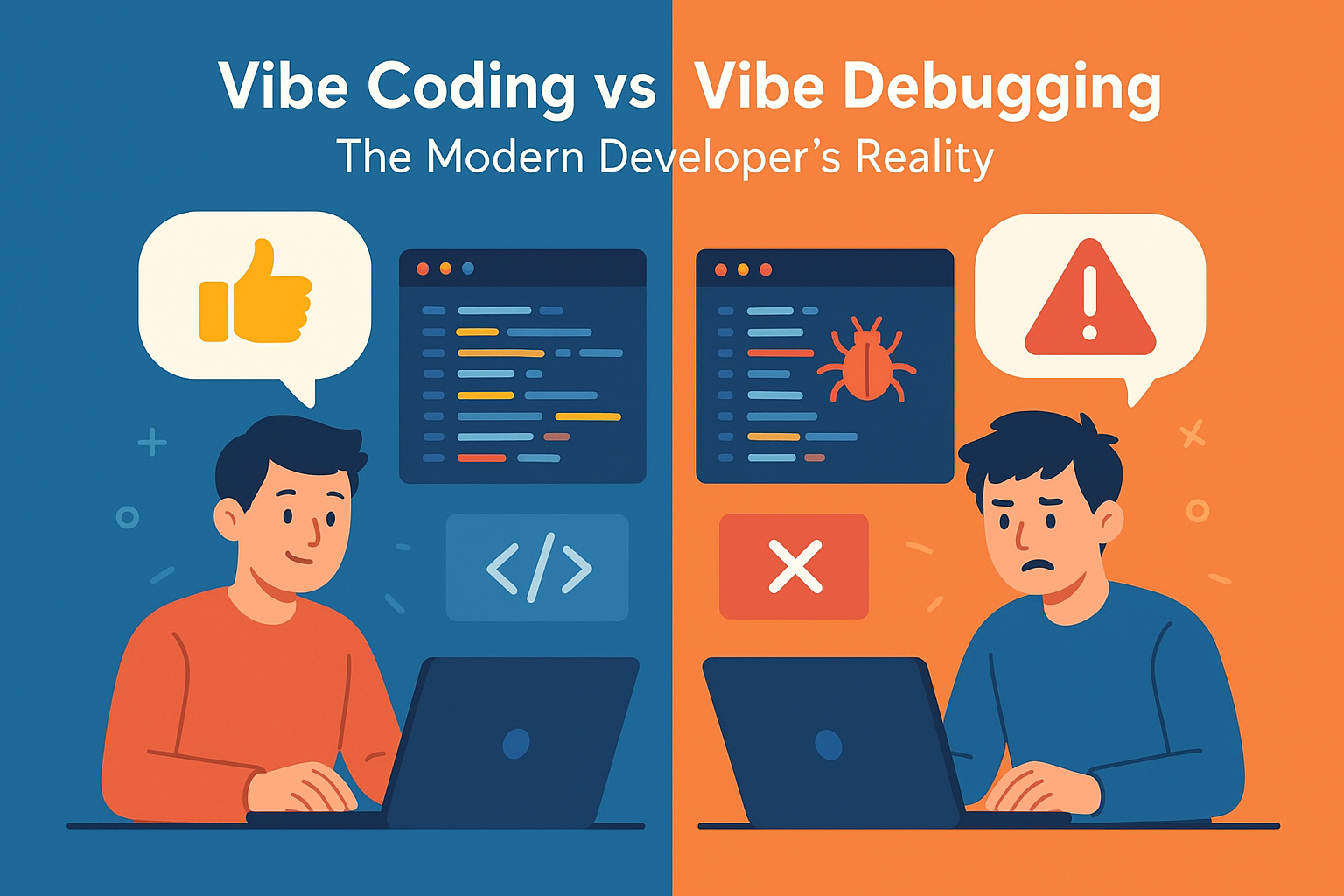What is Vibe Coding?
Vibe coding, a term popularized by computer scientist Andrej Karpathy in early 2025, represents a shift in software development. At its core, vibe coding means the user expresses intention in plain speech and AI transforms that thinking into executable code. Unlike traditional software engineering that demands extensive knowledge of programming languages and syntax, vibe coding embraces a code-first, refine-later mindset. Developers describe their goals in natural language, let advanced AI models handle implementation, and iterate quickly without getting bogged down in manual coding practices.
Recent industry research shows that 44% of developers are predicted to employ AI coding technologies by 2025, with 72% currently favorable toward AI tools for development. Modern AI-driven development tools have moved far beyond autocomplete, making automated software quality checks, static code analysis, and natural language-to-code conversion feasible for entire applications.
Integrated platforms extend this concept by ensuring that the AI-generated output undergoes automated code review in real time. This includes scanning for security vulnerabilities, assessing maintainability, enforcing secure coding guidelines, and verifying compliance with business rules — providing development teams with clean, production-ready code faster.
Understanding Vibe Debugging
While vibe coding accelerates creation, vibe debugging has become its essential counterpart. Vibe debugging is the process of using AI agents to investigate and resolve software issues — understanding code, troubleshooting incidents that disrupt the flow, performing root cause analysis, and suggesting fixes via conversational AI instead of manual tracing or breakpoints.
The metrics surrounding debugging are compelling: engineers spend 30–50% of their time debugging applications; nearly 75% of total development hours can be spent in this phase; and fixing a production bug can cost up to 30 times more than writing the initial code. With an average of 70 defects per 1,000 lines of code, intelligent automated debugging systems have become critical to minimizing downtime.
Tools like Panto AI play a role by integrating defect detection and contextual debugging insight into its pull request checks. When problematic code is committed, Panto AI can flag high-risk functions, identify likely bottlenecks, and suggest targeted remedies — leveraging both static program analysis and historical defect patterns.
The Flow State Connection
Both approaches are strongly linked to the concept of developer flow. Research shows that uninterrupted deep work leads to better productivity, software delivery velocity, and innovation output. Yet, constant context switching, slow CI/CD pipelines, and high cognitive load break flow.
By combining vibe coding and debugging workflows with Panto AI, feedback arrives directly in the code review environment — reducing tool-switching and enabling continuous integration of real-time quality gates. This keeps development teams in their productivity sweet spot, aligning with Agile best practices and DevSecOps principles.
The Productivity Paradox
The relationship between vibe coding and vibe debugging reveals a core productivity paradox: speed in feature delivery doesn’t always translate into long-term efficiency. AI-generated features can cause downstream issues if not rigorously validated against architecture patterns, performance benchmarks, and interoperability requirements.
A continuous reviewer tool like Panto, Greptile or CodeRabbit mitigates these risks by applying secure software development life-cycle checks, API integration validations, and architecture conformance testing during the review stage — before code reaches staging or production.
Best Practices for Balancing Both Approaches
To get the most out of AI-powered development, teams should adopt a balanced approach:
For Vibe Coding:
- Start with clear user stories and specifications before AI-assisted development begins.
- Keep architectures clean and avoid unnecessary dependencies.
- Break down intricate systems into smaller, testable components.
- Implement continuous code review pipelines to ensure outputs meet performance and security standards.
For Vibe Debugging:
- Use targeted inquiry with AI assistants to narrow down error sources.
- Maintain system architecture documentation for guiding AI troubleshooting.
- Employ regression testing automation to validate fixes efficiently.
- Combine AI automation with human oversight for mission-critical code paths.
The Role of Modern Code Review
Modern AI-powered review platforms combine rule-based scanning, machine learning-driven pattern recognition, and contextual code intelligence. These tools identify code smells, detect vulnerable dependencies, and recommend optimized implementation patterns.
Panto AI delivers this by integrating with GitHub, GitLab, and Bitbucket repositories. It also performs automated pull request reviews with AI-assisted recommendations, compliance enforcement, and compatibility checks across 30+ programming languages. It also supports secure CI/CD workflows and zero-trust architecture environments.
Dive into Modern Day Code Review
Panto AI is an enterprise-ready AI code review solution combining static analysis, security scanning, architecture validation, and business logic verification. It aligns implementation with functional and non-functional requirements, while maintaining security certifications. It also offers on-premise deployment for organizations with strict compliance needs.
With features like automated PR summaries, inline annotated suggestions, and cross-referencing Jira tasks, Panto AI ensures review processes are robust. Teams adopting Panto AI report reduced cycle time for code reviews, accelerated deployment timelines, and higher defect detection rates pre-production.
The Future of Development
The convergence of vibe coding and vibe debugging reflects a broader shift towards AI-augmented development pipelines. As organizations adopt many such AI-driven code platforms, they balance fast delivery with high software quality. This ensures scalability, maintainability, and security across the entire development life-cycle.






